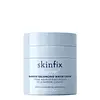What's inside
What's inside
 Key Ingredients
Key Ingredients

 Benefits
Benefits

 Ingredients Side-by-side
Ingredients Side-by-side

Water
Skin ConditioningSqualane
EmollientPropanediol
SolventNiacinamide
SmoothingTriheptanoin
Skin ConditioningSaccharide Isomerate
HumectantAmmonium Acryloyldimethyltaurate/Vp Copolymer
Zinc PCA
HumectantHydrolyzed Hyaluronic Acid
HumectantAllantoin
Skin ConditioningCamellia Sinensis Seed Extract
HumectantAcetyl Heptapeptide-4
HumectantGlucose
HumectantCitric Acid
BufferingSodium Citrate
BufferingCaprylyl Glycol
EmollientTrisodium Ethylenediamine Disuccinate
C12-20 Alkyl Glucoside
EmulsifyingC14-22 Alcohols
Emulsion StabilisingEthylhexylglycerin
Skin ConditioningPotassium Sorbate
PreservativePhenoxyethanol
PreservativeWater, Squalane, Propanediol, Niacinamide, Triheptanoin, Saccharide Isomerate, Ammonium Acryloyldimethyltaurate/Vp Copolymer, Zinc PCA, Hydrolyzed Hyaluronic Acid, Allantoin, Camellia Sinensis Seed Extract, Acetyl Heptapeptide-4, Glucose, Citric Acid, Sodium Citrate, Caprylyl Glycol, Trisodium Ethylenediamine Disuccinate, C12-20 Alkyl Glucoside, C14-22 Alcohols, Ethylhexylglycerin, Potassium Sorbate, Phenoxyethanol
 Reviews
Reviews

Ingredients Explained
These ingredients are found in both products.
Ingredients higher up in an ingredient list are typically present in a larger amount.
Ammonium Acryloyldimethyltaurate/Vp Copolymer (let's call it AAVC for short) is a synthetically created polymer. It's used as a film-forming agent and used to thicken the consistency of products.
AAVC is able to increase the consistency and viscosity of products due to its large molecule size. It also prevents ingredients from separating.
Ethylhexylglycerin (we can't pronounce this either) is commonly used as a preservative and skin softener. It is derived from glyceryl.
You might see Ethylhexylglycerin often paired with other preservatives such as phenoxyethanol. Ethylhexylglycerin has been found to increase the effectiveness of these other preservatives.
Hydrolyzed Hyaluronic Acid is a form of hyaluronic acid. It is created by the hydrolysis of hyaluronic acid with a high molecular weight. Once created, Hydrolyzed Hyaluronic Acid has a low molecular weight.
Low molecular weight HA has been shown to hydrate and increase elasticity of the skin. Increasing elasticity is also associated with reduction of wrinkle depth.
One study found topical low molecular weight hyaluronic acid may be considered for the treatment of rosacea in the adult population. However, we always recommend speaking with a professional about your skin concerns.
Hyaluronic acids are a humectant. This means they draw moisture from the air. Hyaluronic acids help moisturize, soothe, and protect the skin.
Read more about other common forms of hyaluronic acid:
Learn more about Hydrolyzed Hyaluronic AcidPhenoxyethanol is a preservative that has germicide, antimicrobial, and aromatic properties. Studies show that phenoxyethanol can prevent microbial growth. By itself, it has a scent that is similar to that of a rose.
It's often used in formulations along with Caprylyl Glycol to preserve the shelf life of products.
Propanediol is an all-star ingredient. It softens, hydrates, and smooths the skin.
It’s often used to:
Propanediol is not likely to cause sensitivity and considered safe to use. It is derived from corn or petroleum with a clear color and no scent.
Learn more about PropanediolWater. It's the most common cosmetic ingredient of all. You'll usually see it at the top of ingredient lists, meaning that it makes up the largest part of the product.
So why is it so popular? Water most often acts as a solvent - this means that it helps dissolve other ingredients into the formulation.
You'll also recognize water as that liquid we all need to stay alive. If you see this, drink a glass of water. Stay hydrated!
Learn more about Water